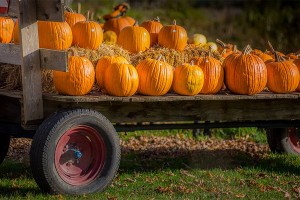Happenings
Where to go and what to see for your winter arts fix.
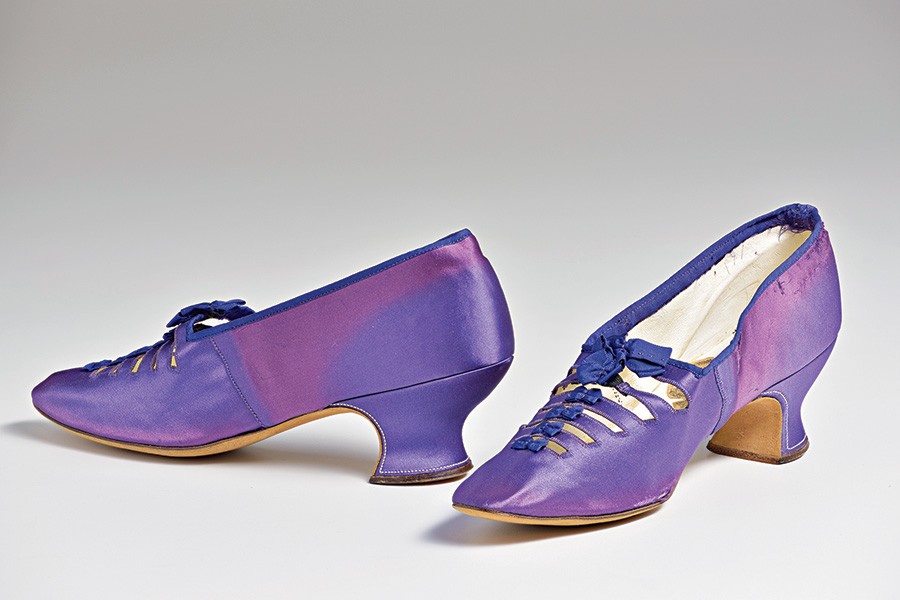
Gardner’s purple satin slippers made by Cordonnier Chappelle, about 1900. / Photo courtesy of Isabella Stewart Gardner Museum
Inventing Isabella
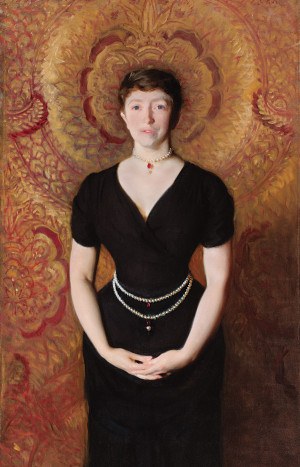
John Singer Sargent’s portrait of Isabella Stewart Gardner, 1888. Oil on canvas. / Photo courtesy of Isabella Stewart Gardner Museum
An air of mystery surrounded Isabella Stewart Gardner. She had a reputation for defying expectations for her gender and class—she dared to be different in a way that no female had before her. This exhibition at the Isabella Stewart Gardner Museum shows how Gardner used the visual media of her day—art, fashion, and photography—to carefully navigate the boundary between her private identity and public image. An enigmatic figure, many stories, scandals, and myths surrounded her during her lifetime and still do today. This exhibition unites many pictures of Gardner—from formal oil paintings to informal drawings to personal and press photographs—that she chose to preserve. Combined with select pieces of her clothing and jewelry, the public can see how she fashioned herself and entered into long and intricate collaborations with artists to craft her public image.
Through 1/15/24, 25 Evans Way, Boston, 617-566-1401, gardnermuseum.org.
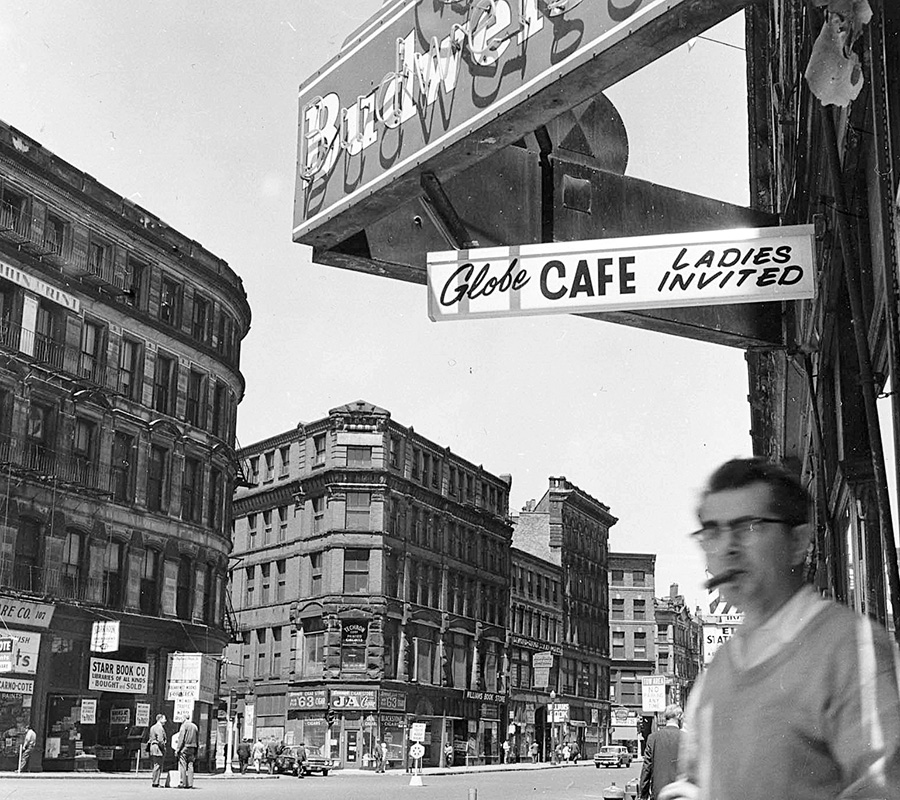
Photography by Irene Shwachman, Washington Street, Adams Square, May 23, 1962. Gelatin silver print.
Developing Boston
At the Boston Athenaeum’s Calderwood Gallery, this show features the acclaimed works of two photographers: Berenice Abbott and Irene Shwachman. Abbott produced a 1934 photographic survey of Boston’s 19th-century buildings. Twenty-five years later, Shwachman began the “Boston Document,” a series that pictured Boston’s redevelopment. The 20th century witnessed great change in Boston’s topography. The city’s crooked, narrow streets were widened to make way for increased automobile traffic. Human-scale buildings and small, open spaces were usurped by skyscrapers and monumental plazas. The city’s skyline of spires and domes became punctuated with tall, box-like office buildings. Photographing at different times in Boston’s history, Abbott’s and Shwachman’s series each explore ways of viewing, dissecting, and preserving Boston. Abbott approaches Boston from a distance, offering stoic views, oscillating between straightforward and oblique angles. Shwachman, a student of Abbott’s, amended her teacher’s approach by photographing Boston through a personal, subjective lens to highlight the city’s dynamism. As a coda to the exhibition, the Athenaeum collaborated with teen artists from Artists for Humanity to create photographs that explore Boston’s continued redevelopment.
Through 12/30, 10 ½ Beacon St., Boston, 617-227-0270, bostonathenaeum.org.
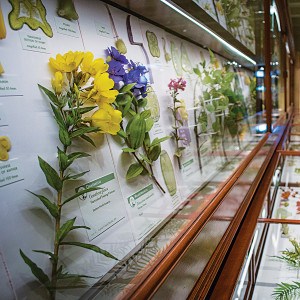
“Glass Flowers” exhibit detail. / Photo via The Ware Collection of Blaschka glass models of plants, Harvard University Herbaria/Harvard Museum of Natural History © President and Fellows of Harvard College
Glass Flowers
One of Harvard University’s most famous treasures is the internationally acclaimed Ware Collection of Blaschka Glass Models of Plants, better known as the Glass Flowers. On permanent exhibition at the Harvard Museum of Natural History, this one-of-a-kind collection was created by Czech artists Leopold Blaschka (1822–1895) and his son Rudolf (1857–1939). The Blaschkas used a process called lampworking (or flameworking)—heating rods of clear or colored glass over a small burner, then bending them using metal pliers—to craft their masterpieces. It’s been said that the works look almost too realistic, as when they’re photographed, they look like plants. For 50 years, from 1886 to 1936, the Blaschkas produced 4,300 astonishingly realistic glass models that represent 780 plant species. The glass flowers have been part of Harvard’s collections since the first director of the university’s botanical museum commissioned the father and son to create the series of models in 1886.
Ongoing, 26 Oxford St., Cambridge, 617-495-3045, hmnh.harvard.edu.
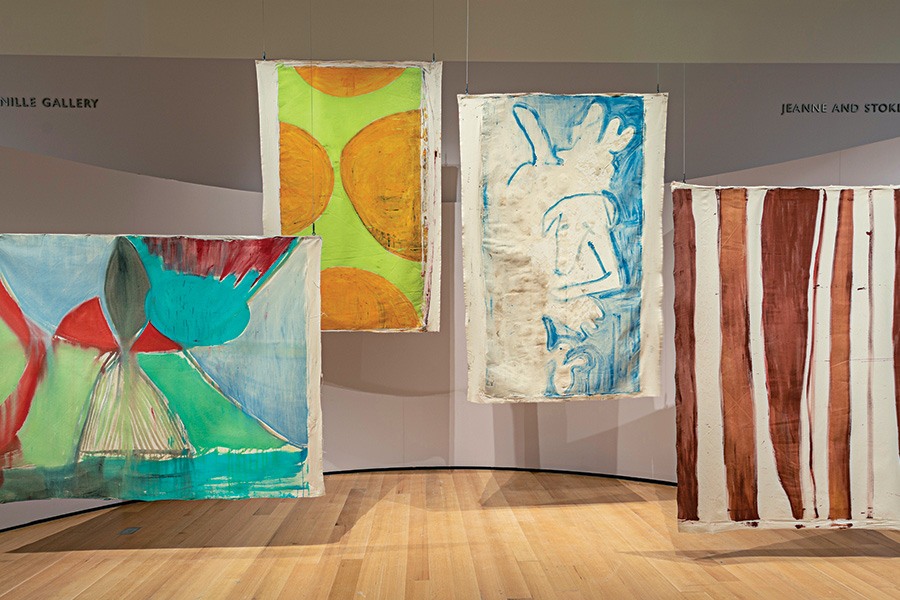
“Tender Loving Care” exhibition at Museum of Fine Arts, Boston. / Photo courtesy of the Museum of Fine Arts, Boston
Tender Loving Care
This new installation at the MFA Boston invites visitors to explore how contemporary artists trace and address concepts of care through their materials, subjects, ideas, and processes. Nearly 100 works are divided into thematic groups—threads, vibrant matter, thresholds, rest, and adoration—that connect these works of art holistically rather than highlighting traditional categories. The display brings decorative art, fashion, fiber, and textiles in conversation with painting, sculpture, print, and photography, arguing for an equivalency between media. With 23 percent of the more than 100 works by local artists and 67 percent by women artists, many of the pieces have not been on view before or have not been on view in several years. The numerous voices include Joan Snyder’s Resurrection, an eight-panel work on view for the first time since its acquisition in 1986, and one of the MFA’s newest works (acquired in 2023), Bruise Painting “Lakefront Blues,” by Rashid Johnson. Through these works and many others, visitors can consider how different forms of care may inspire new models for living and feeling—now and in the future.
Through 7/28/25, 465 Huntington Ave., Boston, 617-267-9300, mfa.org.
First published in the print edition of Boston Home’s Winter 2024 issue, with the headline “Green With Envy.”
